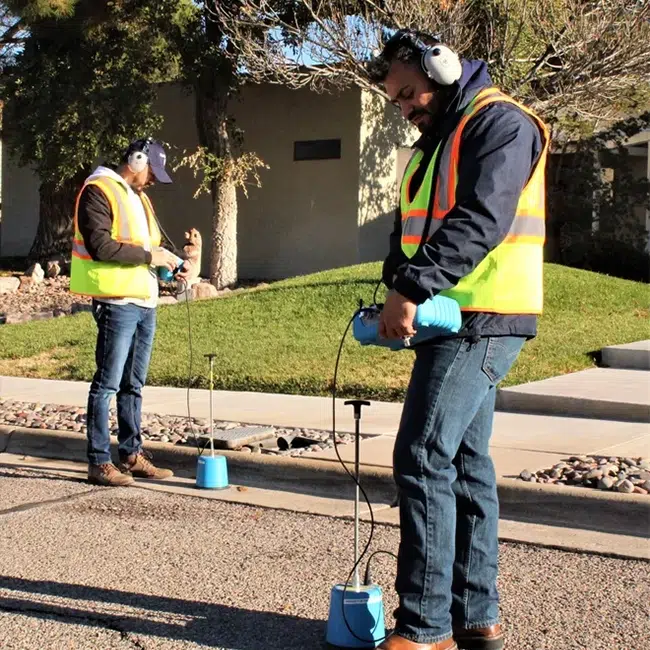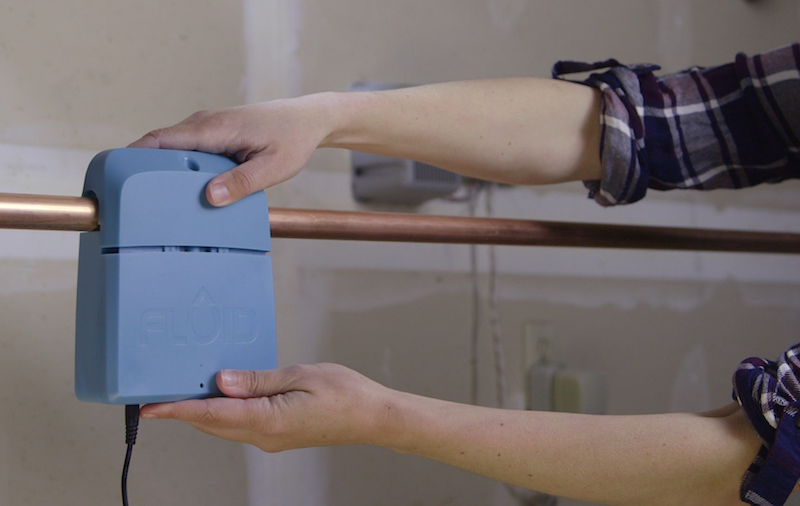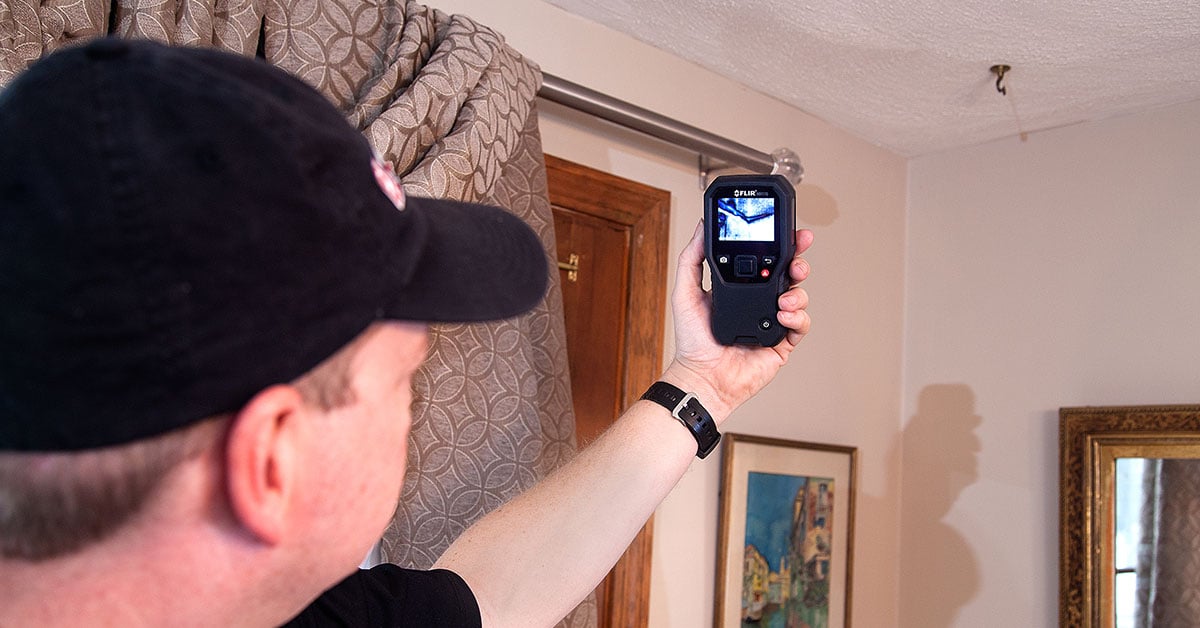Expert Water Leak Detection Services: Safeguard Your Home from Expensive Damage
Expert Water Leak Detection Services: Safeguard Your Home from Expensive Damage
Blog Article
Cutting-edge Solutions for Very Early Discovery of Water Leaks in Structures and Infrastructure
From cutting-edge leak discovery technologies to the deployment of IoT sensing units for real-time tracking, the landscape of leakage avoidance is progressing rapidly. Automated water flow analysis systems are reshaping exactly how leaks are determined and addressed, leading the means for a positive strategy to water leakage discovery.
Advanced Leak Detection Technologies
Advanced leakage discovery innovations, outfitted with innovative sensors and algorithms, play a critical duty in swiftly identifying and pinpointing water leaks in numerous settings. These innovations utilize a mix of acoustic, thermal, and electro-magnetic picking up approaches to discover leakages accurately. Acoustic sensing units spot the sound of escaping water, enabling precise localization of the leak source. Thermal imaging identifies temperature modifications created by water leakage, supplying another effective method for leak recognition. Electro-magnetic sensors can determine changes in electro-magnetic fields triggered by water, using yet one more layer of leakage detection capability.

IoT Sensors for Real-Time Surveillance
In the realm of contemporary water leakage detection, the combination of IoT sensors for real-time monitoring stands for a crucial advancement in improving positive leakage discovery abilities. These sensors supply continual monitoring of water supply, providing real-time information on water flow prices, pressure variants, and temperature level adjustments. By leveraging IoT innovation, these sensors can spot even the smallest anomalies in water usage patterns, enabling very early recognition of prospective leaks prior to they intensify right into significant problems.
IoT sensing units transmit information to a centralized platform, where innovative formulas evaluate the information and generate alerts or notices when irregularities are found. This real-time surveillance ability permits homeowner or center supervisors to immediately resolve leakages, lessening water damage, decreasing repair expenses, and conserving water resources.
Moreover, IoT sensors can be integrated with building monitoring systems, permitting automatic reactions to spotted leaks, such as closing off water valves or activating pumps to reduce the impact of leaks. Overall, the execution of IoT sensing units for real-time monitoring considerably improves the efficiency and effectiveness of water leak discovery in buildings and facilities.
Artificial Intelligence Algorithms for Leakage Prediction

One secret benefit of making use of artificial intelligence for leak prediction is its capacity to continuously learn and enhance its accuracy with time. As more information is accumulated and fed right into the algorithm, it can improve its predictions and adapt to altering conditions, eventually boosting the dependability of leakage detection systems.
Moreover, maker knowing algorithms can aid in identifying refined indicators of leaks that may go unnoticed by standard surveillance techniques. water leak detection. By assessing complex information sets in real-time, these algorithms can supply early warnings and informs, permitting for prompt treatment and preventive maintenance to alleviate possible water damages and linked prices
Making Use Of Thermal Imaging for Leakage Detection
Thermal imaging innovation supplies a promising approach for detecting water leakages in different systems and frameworks. By making use of infrared radiation and temperature variations, thermal imaging electronic cameras can recognize concealed leakages that are not easily noticeable to the naked eye. When water escapes from Find Out More pipelines or structures, it commonly changes the temperature of the surrounding area, developing temperature differentials that thermal cams can record. These temperature level irregularities are after that converted into visible photos, highlighting the specific area of the leak.
One of the vital benefits of thermal imaging for leak detection is its non-intrusive nature. Unlike standard techniques that may call for getting into wall surfaces or floorings to situate leaks, thermal imaging enables non-destructive testing. This not only conserves time and minimizes expenses however likewise decreases interruption to the structure or framework being examined. Furthermore, thermal imaging can rapidly scan large areas, providing a detailed introduction of prospective leakage resources in a prompt way. On the whole, making use of thermal imaging technology improves the efficiency and accuracy of water leak detection, making it a beneficial device for keeping the stability of buildings and frameworks.
Automated Water Circulation Analysis Equipments
Just why not try these out how can computerized water circulation evaluation systems transform the detection and management of leaks in various systems and facilities? Automated water flow analysis systems provide a positive technique to leak discovery by continually checking water flow rates and patterns. By developing baseline information, these systems can swiftly determine variances that may indicate a leak, making it possible for timely intervention to avoid substantial damages.
These systems utilize innovative formulas to examine real-time information and supply instant notifies when anomalies are found, enabling swift action to be taken. Additionally, computerized water circulation evaluation systems can be integrated with visit this site right here structure management systems or IoT platforms, improving overall effectiveness and enabling remote monitoring abilities.
Moreover, the information accumulated by these systems can be utilized for predictive upkeep purposes, assisting to recognize prospective weak points in the framework prior to leaks take place. On the whole, the application of computerized water flow evaluation systems can considerably improve leak detection and monitoring methods, ultimately leading to set you back financial savings, decreased water wastefulness, and boosted sustainability in buildings and framework.

Verdict
Finally, the integration of advanced leak detection innovations, IoT sensing units, device discovering formulas, thermal imaging, and computerized water flow analysis systems supplies innovative remedies for early discovery of water leakages in structures and framework. These modern technologies allow real-time monitoring, prediction of leakages, and effective discovery methods to avoid water damages and wastage. Applying these solutions can help in maintaining the integrity and sustainability of water supply in different setups.
Report this page